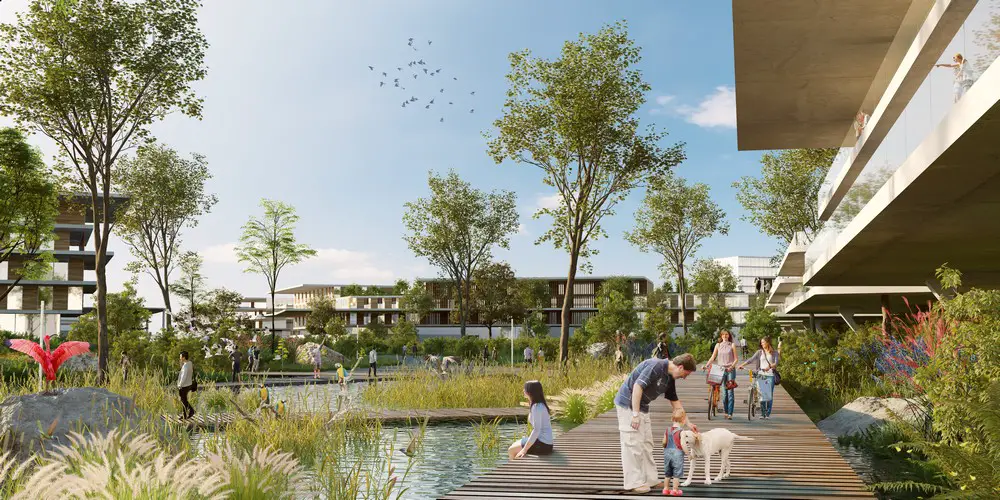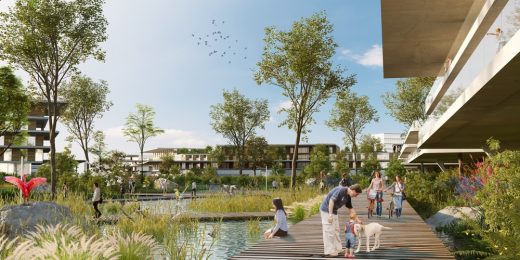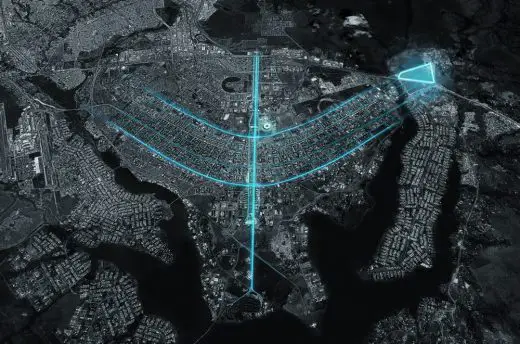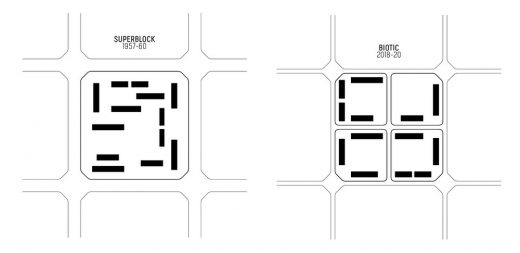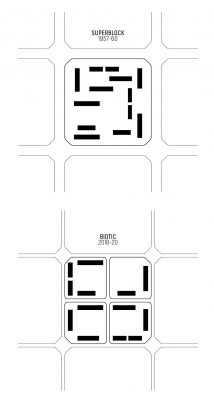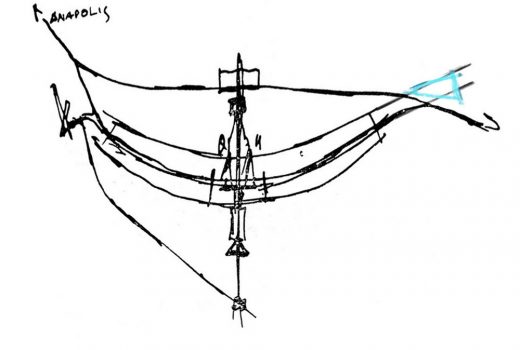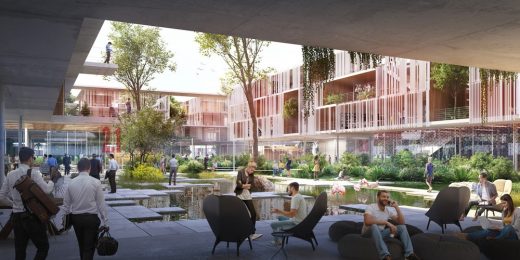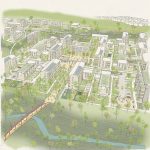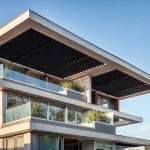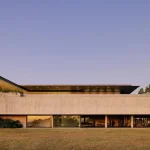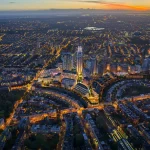Biotic Brasilia masterplan extension, Carlo Ratti Associati Brazil Buildings, Design News, Architecture Images
Biotic Brasilia masterplan extension
12 Aug 2020
Brasilia masterplan extension by Carlo Ratti Associati
Architects: Carlo Ratti Associati with EY
Location: Brasília, Brasil
CRA designs major extension of Brasilia’s historical masterplan
The project, started in 2018 and unveiled today, reinterprets Lúcio Costa and Oscar Niemeyer’s modernist master plan for Biotic – a high-tech innovation district immersed in nature. Biotic reinterprets super-blocks to create a “street front” and implements climate bioremediation to promote outdoor working and gathering.
August 12th, 2020 – International design and innovation office Carlo Ratti Associati, together with consultancy firm EY, has developed a master plan for public real estate company TerraCap named BIOTIC, a 10-million square foot (1-million square meter) technology and innovation district in Brasilia.
The project is located on the hinge point between Lúcio Costa and Oscar Niemeyer’s UNESCO World Heritage “Plano Piloto” – the foundation of the Brazilian capital in 1960 – and the Brasilia National Park, a 42,000-hectar green area in the northwest of the Federal District. BIOTIC, inspired by Brasilia’s UNESCO World Heritage masterplan, proposes the principle of domesticating nature – by creating a new hybrid environment aimed towards both social and environmental sustainability.
As a major extension of Brasilia’s historical master plan, BIOTIC will feature residences, offices, plazas, and parks, engaging with the modernist heritage in novel ways. In the BIOTIC project, the four urban scales defined by Costa in “Plano Piloto” – the residential, the monumental, the gregarious and the bucolic – are re-mixed in a human way.
“The first time I visited Brasilia, a friend and long-time city resident told me a long-standing joke: ‘You know what the problem of Brasilia is? The district of cafés is far away from the district of sugar.’ In short, a key issue lies with the lack of mixed-use and with the strictly functional subdivision of the city according to modernist principles – which we are aiming to overcome with our plan” says Carlo Ratti.
Beyond mixed-use, in the masterplannig scale, Brasilia’s iconic Superquadra (or superblock) modules are subdivided in pedestrian blocks with street fronts. As recently done in Barcelona by reprogramming street level on the Cerda Eixample blocks, internal neighborhoods are protected from traffic and pollution and strengthen pedestrian spaces for social cohesion. By reversing the distribution of volumes on the Superquadra, the plan creates streets and vibrant plazas open to social activities. The natural scale is highlighted through a green corridor that connects the nearby Cerrado to the BIOTIC site.
“Brasilia is a fascinating metropolis: a monumental axis and two wings that captivate you when you look at it from the plane,” says Carlo Ratti, founding partner at CRA and director of the Senseable City Lab at the Massachusetts Institute of Technology (MIT): “However as French intellectual Simone de Beauvoir once said, “Brasilia is an expanse of elegant monotony […] The street, that meeting ground of […] passers-by, of stores and houses, of vehicles and pedestrians […] does not exist in Brasília and never will. Our project aims to counter this proposition and bring a new vibrancy to Brasilia.”
The project also envisages the possibility of Outdoor Office environment, thanks to Brasilia’s year-round mild climate. Beyond turning its vibrant alfresco restaurants and cafés into spaces for smart working, all curtain walls in the buildings open like real “curtains”. Using digital technologies to manage sunlight, wind, and temperature, BIOTIC offers its occupants the chance to work in close contact with nature, which is scattered around plazas, pedestrian areas, shared vegetable gardens, laboratories, and retail facilities. People can seamlessly move between public and private, open and secluded areas.
“The office buildings, hovering above the ground level, are designed for sun and wind to come in,” says James Schrader, project manager at CRA. “Thanks to a system of openable wooden facades that can slide along the building like a curtain, the interior spaces will open to the exterior, allowing users to enjoy Brasilia’s weather. This project merges the interior and exterior into one space.”
The project continues CRA’s commitment to master planning and urban innovation, with a growing portfolio that includes MIND (Milan Science & Innovation Park) in the former site of Milan Expo 2015, the Ciudad Creativa Digital in Mexico’s Guadalajara, and the plan for the requalification of the former Patrick Henry military village in Germany’s IBA Heidelberg. Innovative mobility is another focus of BIOTIC. The site’s internal streets and roads are accessible exclusively to self-driving and shared vehicles, as various positive changes like improved traffic, lower carbon footprint and new business opportunities are expected to come with the spread of autonomous cars.
The master plan by CRA was developed in collaboration with EY, for TerraCap, Brasilia’s primary real estate company. The project was started in late 2018 and has now been unveiled.
Biotic Brasilia masterplan extension – Building Information
Title: BIOTIC
Type: A master plan project by CRA-Carlo Ratti Associati, developed in collaboration with Ernst&Young
Client: TerraCap
Year of development: 2017-2020
CRA Team: Carlo Ratti, James Schrader (Project manager), Rui Guan, Federico Riches, Chenyu Xu, Stephanie Lee, Pietro Franceschini, Ben Johnson
CRA Graphic Team: Gary di Silvio, Pasquale Milieri, Gianluca Zimbardi
Mobility consultancy: MIC – Mobility in Chain
Sustainability strategy: LAND
Engineering consultancy: Ai Engineering
ABOUT CARLO RATTI ASSOCIATI
Carlo Ratti Associati (CRA) is an international design and innovation practice based in Turin, Italy and New York City. Drawing on Carlo Ratti’s research at the Massachusetts Institute of Technology (MIT), the office is currently involved in many projects across the globe, embracing every scale of intervention—from furniture to urban planning. Among recent projects there are the Italian Pavilion at Expo Dubai 2020, the CapitaSpring skyscraper in Singapore, the curatorship of the “Eyes of the City” at the 2019 Bi-City Biennale of Architecture and Urbanism of Shenzhen, the redesign of the Agnelli Foundation HQ in Turin, the masterplan for Milan Innovation District (MIND).
CRA is the only design firm whose works have been featured three times in TIME Magazine’s “Best Inventions of the Year” list— respectively with the Digital Water Pavilion in 2007, the Copenhagen Wheel in 2014 and Scribit in 2019. In the last years, the office has been involved in the launch of Makr Shakr, a startup producing the world’s first robotic bar system, and Scribit, the write&erase robot.
ABOUT EY-ERNST AND YOUNG
EY, one of the world’s leading professional services organizations, helps companies across the globe to identify and capitalize on business opportunities. We deliver the value that clients care about; we provide ideas and solutions tailored to meet clients’ needs; and we produce tangible results. EY’s depth and breadth of service and our global reach mean that we have the resources to serve any client, anywhere in the world.
ABOUT TERRACAP
Companhia Imobiliária de Brasília (TerraCap) is the largest real estate company in Brazil. The company was created in 1972 to support the Government of the Federal District whose objective is to carry out, for remuneration, real estate activities of interest to the Federal District, including the use, acquisition, administration, disposition, incorporation, encumbrance or alienation of assets. TerraCap focuses on the proposition, operationalization and implementation of economic and social development programs and projects of interest to the Federal District.
ABOUT BIOTIC TECHNOLOGY PARK
The Technology Park of Brasília – BIOTIC is an innovation district with more than 1 million square meters located at the intersection between the Plano Piloto, a central area in the capital of Brazil and a UNESCO World Heritage Site, and the National Park of Brasília. It is a large-scale real estate project that seeks to attract technology-based companies, with the objective of creating an ecosystem of innovation and business immersed in a vibrant district, in the concept of smart cities, integrated with nature, with offices, universities, shops, residences and public spaces that harmonize with the richness of the surrounding landscape.
Biotic Brasilia masterplan extension images / information received 120820
Location: Brasília. DF, Brazil
Architecture in Brazil
Brazilian Architectural Projects
Brazilian Architecture Design – chronological list
Brasilia Buildings
IESB University Building
Architects: Pei Cobb Freed & Partners
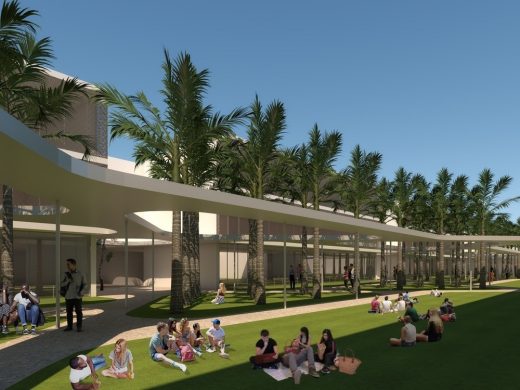
rendering : Pei Cobb Freed & Partners
IESB University Building Brasilia
Casa Clara
Architects: 1:1 arquitetura:design
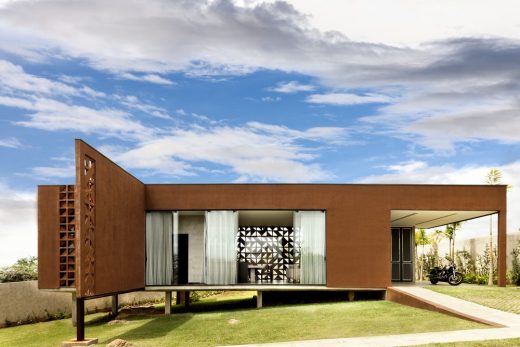
photograph : Edgard Cesar
Casa Clara in Brasilia
Brasilia Stadium : World Cup Venue
Design: gmp
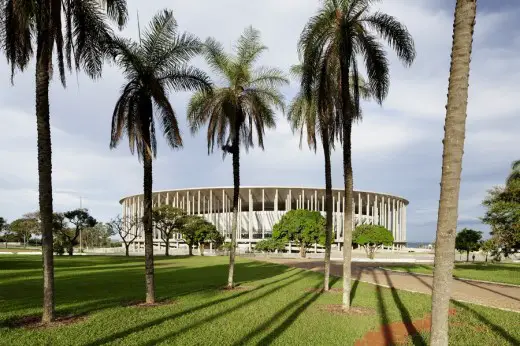
photograph : Marcus Bredt
Brasilia Stadium Building
Osler House
Design: Marcio Kogan Arquitetos
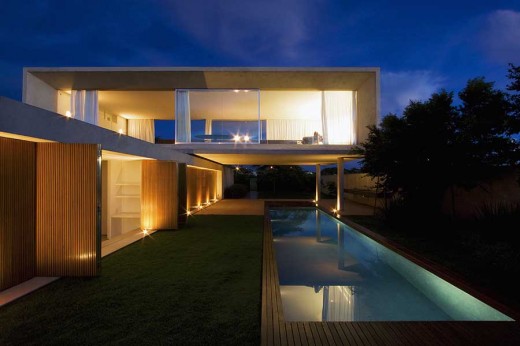
photograph : Pedro Vannucchi
Brasilia Property
Byte Building Brasilia
Design: DOMO Arquitetos Associados
Byte Building in Brasilia
Mané Garrincha Stadium
Mané Garrincha Stadium
Temporary art gallery
Design: DOMO Arquitetos Associados
Patchwork Pavilion Brasilia Building
Comments / photos for the Biotic Brasilia masterplan extension page welcome

